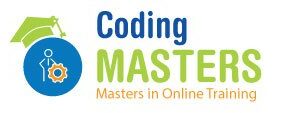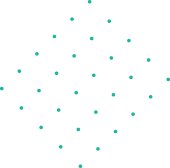Statistics plays a crucial role in Data Science, helping professionals analyze data, extract meaningful insights, and make data-driven decisions. Whether you are a beginner or an experienced professional, mastering statistics is essential for building predictive models and understanding patterns in data. If you are looking for the Best Online Data Science Training in Hyderabad, Coding Masters provides an in-depth curriculum covering all key statistical concepts with hands-on implementation in Python.
Best Online Data Science Training in Hyderabad
Statistics is a branch of mathematics that deals with collecting, analyzing, interpreting, and presenting data. It provides the foundation for machine learning algorithms and data analysis techniques used in Data Science. Understanding statistics helps data scientists make informed decisions based on data trends.
Types of Statistics
Statistics is broadly categorized into two types:
- Descriptive Statistics – Summarizes and describes the main features of a dataset, such as mean, median, mode, and standard deviation.
- Inferential Statistics – Uses sample data to make predictions or generalizations about a larger population through hypothesis testing and confidence intervals.
Population & Sample
- Population: The complete set of data or subjects under study.
- Sample: A subset of the population used to infer insights about the entire population.
Selecting the right sample size is critical for ensuring accurate results and avoiding biases in Data Science applications.
Central Tendencies: Mean, Median, and Mode
Central tendency measures help identify the central value of a dataset:
- Mean: The average of all values.
- Median: The middle value when data is arranged in ascending order.
- Mode: The most frequently occurring value in a dataset.
Understanding these concepts is vital for summarizing data effectively.
Percentiles & Dispersion
- Percentiles help understand the distribution of data, useful in ranking and scoring.
- Dispersion measures (Range, Variance, and Standard Deviation) determine how spread out the data is.
Statistics Implementation with Python – I
Python is a powerful tool for statistical analysis in Data Science. Popular libraries include:
- NumPy for numerical computations
- Pandas for data manipulation
- Matplotlib & Seaborn for visualization
- SciPy & Statsmodels for statistical functions
Example:
import numpy as np
import pandas as pd
import scipy.stats as stats
data = [10, 20, 30, 40, 50]
mean_value = np.mean(data)
median_value = np.median(data)
mode_value = stats.mode(data)
print(f”Mean: {mean_value}, Median: {median_value}, Mode: {mode_value.mode[0]}”)
Range, Sample Variance, and Standard Deviation
- Range: The difference between the maximum and minimum values.
- Sample Variance: Measures how much the data points deviate from the mean.
- Standard Deviation: The square root of variance, indicating the spread of data.
Correlation & Causation
- Correlation: A statistical measure that describes the relationship between two variables.
- Causation: Indicates that one variable directly influences another.
Example correlation check in Python:
import numpy as np
data1 = [10, 20, 30, 40, 50]
data2 = [5, 15, 25, 35, 45]
correlation = np.corrcoef(data1, data2)
print(“Correlation Matrix:”, correlation)
Hypothesis Testing
Hypothesis testing is a statistical method used to make inferences about populations based on sample data. Common types include:
- Null Hypothesis (H0): Assumes no effect or difference.
- Alternative Hypothesis (H1): Suggests a significant effect or difference.
- P-value: Determines the statistical significance of the test.
- Confidence Interval: A range of values within which the true population parameter lies with a given probability.
Parametric and Non-Parametric Tests
- Parametric Tests (e.g., T-test, ANOVA) assume data follows a normal distribution.
- Non-Parametric Tests (e.g., Chi-square, Mann-Whitney U test) do not require normal distribution assumptions.
Learn More with Coding Mastershttps://codingmasters.in/contact-us/
At Coding Masters, we offer the Best Online Data Science Training in Hyderabad, covering statistics, machine learning, deep learning, and more. Explore our Data Science Course for hands-on learning and expert mentorship.
FAQs on Statistics for Data Science
- Why is statistics important in data science?
Statistics helps analyze data, identify patterns, and build predictive models. - What are the basic statistical concepts needed for data science?
Mean, median, mode, variance, standard deviation, correlation, and hypothesis testing. - How does Python help in statistical analysis?
Python provides libraries like NumPy, Pandas, SciPy, and Statsmodels for statistical analysis. - What is the difference between descriptive and inferential statistics?
Descriptive statistics summarize data, while inferential statistics draw conclusions from samples. - What are central tendency measures?
Mean, median, and mode. - How do you calculate correlation in Python?
Using numpy.corrcoef() or pandas.DataFrame.corr(). - What is the difference between correlation and causation?
Correlation shows a relationship between variables, while causation implies one variable affects another. - What is hypothesis testing in data science?
A method to test assumptions using statistical tests. - What is a P-value?
The probability of observing results as extreme as the sample data under the null hypothesis. - What are parametric and non-parametric tests?
Parametric tests assume normal distribution; non-parametric tests do not. - Why is standard deviation important?
It measures data dispersion and variability. - What are percentiles and how are they used?
Percentiles divide data into 100 equal parts and help in ranking. - How do sample size and population affect statistical accuracy?
Larger samples provide more reliable estimates of population parameters. - What is the role of variance in data analysis?
It shows the spread of data around the mean. - Which Python libraries are best for statistical analysis?
NumPy, Pandas, SciPy, Statsmodels, Seaborn. - How do you choose the right statistical test?
Based on data type, distribution, and hypothesis. - What are some real-world applications of statistics in data science?
Fraud detection, customer segmentation, stock market analysis. - How is hypothesis testing implemented in Python?
Using scipy.stats functions like ttest_ind() and chi2_contingency(). - What is the importance of confidence intervals?
They provide a range of values to estimate population parameters. - Where can I learn statistics for data science in Hyderabad?
At Coding Masters, offering the Best Online Data Science Training in Hyderabad.
For expert guidance, enroll in the Best Online Data Science Training in Hyderabad at Coding Masters and elevate your career in data science!



